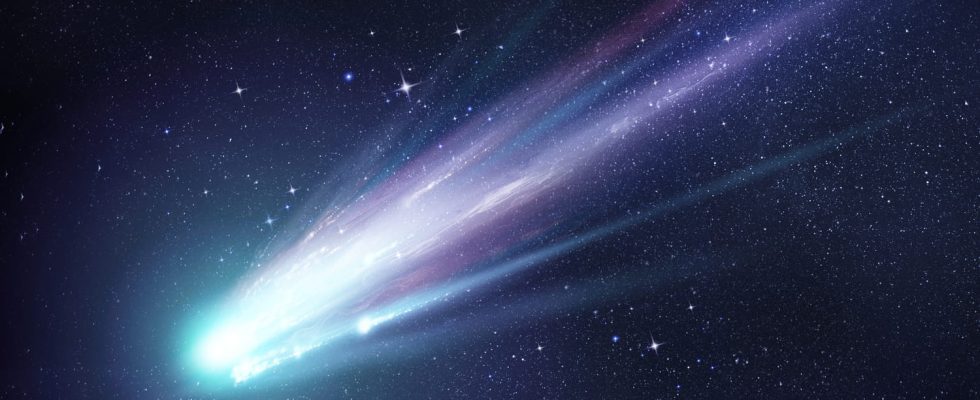Don’t miss the boat because this giant comet will not return before 2095…
It is an extremely astronomical phenomenon rare that looms : the comet 12P/Pons-Brooksnicknamed “Devil’s Comet” will be visible in the sky with the naked eye for the first time for 71 years. In orbit around the Sun for several months, it is getting closer to the Earth… This blue-green celestial body is one of the brightest and measures more than 30 kilometers in diameter, or 3 times more than the height of Everest (8.8 km), scientists joke. It’s a comet called “cryovolcanic”that’s to say “a volcano with sublimating ice passing near the sun, that is to say it passes into the gaseous state. She has one very unpredictable activity“, explains Olivier Sanguy, specialist in astronautics and editor-in-chief of the Cité de l’espace space news site in Toulouse, to our colleagues at France Blue. Don’t miss the boat because she won’t come back before 71 years and 3 months, i.e. in the summer of 2095…
Why this name?
Funny name for a comet. By observing this star in the past, the astronomers of the British Astronomical Association (BAA) were able to observe on two occasions “horns” on its surface, hence the nickname “Devil’s Comet”. These “horns” correspond to gas escapes that occur when pressure and temperature increase. This phenomenon results from its unique composition made of ice and dust: an explosive mixture which produces these forms rarely observed on the scale of the Universe. Its blue-green color is due to “dicarbon concentrations illuminated by the Sun“, explains on his Twitter American astrophotographer Andrew McCarthy.
When to see it in France?
Some people, especially in Spain, have already had the chance to see it from their garden at the beginning of March. In France, the Devil’s Comet will be particularly bright from Friday March 22, 2024 and this for about two weeks. To hope to see this star, you will need:
- Go out early in the evening, between 8 p.m. and 9:30 p.m.
- Look at the sky in the direction North/North-West (use your phone’s compass!) and locate a blue-green dot (for connoisseurs: about 8° below the Andromeda galaxy)
- Choose a day when the sky is clear
- Being far from any light pollution (interior and exterior lights of homes and buildings, public lighting, etc.)
- If necessary: use an application that helps find celestial bodies (Stellarium, Starwalk or Nocturne) in the sky
With what equipment?
This celestial body can be observed with the naked eye or with a pair of binoculars (“40 to 50 mm in diameter minimum”, specifies Nicolas Biver, President of the comet commission of the Astronomical Society of France) but you will certainly see a slightly blurry star. On the other hand, with an astronomical telescope or telescope, it will be more detailed and you will be able to see the typical blue/green tail of this comet. Finally, while looking at the Sun with the naked eye can be dangerous for the eyes, this is not the case with comets.
